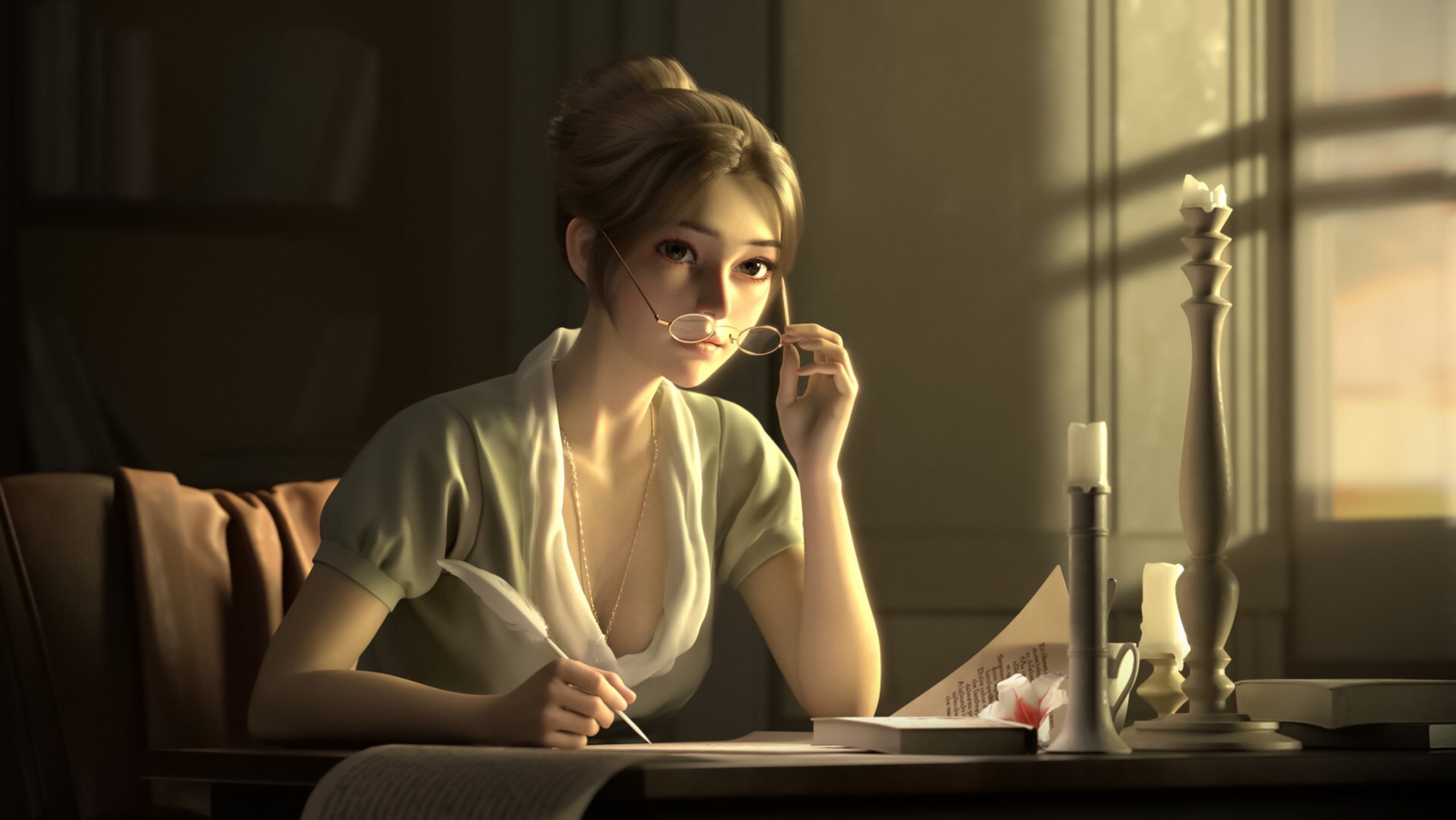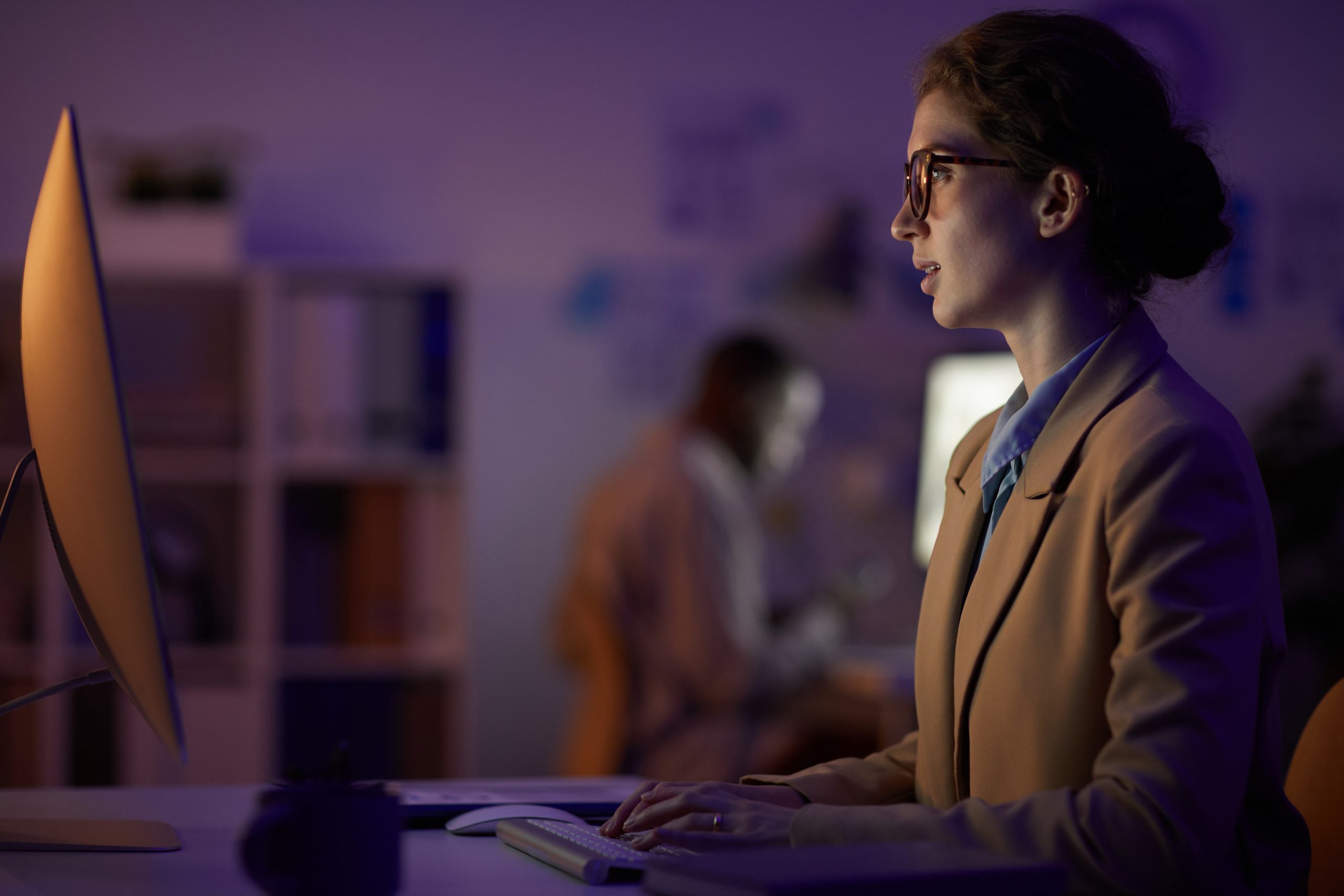
Breathing new life into a classic tale of creation and destruction, Laura Moss’ clever, disquieting debut feature “birth/rebirth” (in theaters August 18; via IFC Films and Shudder) re-examines the Frankenstein myth through the lenses of motherhood and mortality.
Inspired by Mary Shelley’s 19th-century novel, this story of two women bound together by their relationship to an undead little girl equally evokes David Cronenberg’s “Dead Ringers,” with its clinically invasive and darkly humorous conception of the body as a site of warring physiological and psychological realities. Most of all, the film—which premiered at the 2023 Sundance Film Festival—signifies the arrival of an uncompromising new voice in horror.
At the center of “birth/rebirth” is Rose (Marin Ireland), a morgue technician who prefers the company of cadavers as she conducts research into bringing the dead back to life, a project she obsesses over at work and in her Bronx apartment. Elsewhere in the hospital, maternity nurse Celie (Judy Reyes) balances caring for patients and tending to her six-year-old daughter, Lila (A.J. Lister). When Lila falls ill and dies, Celie cannot accept the loss. Rose has a solution. That the two women succeed in reanimating the child’s corpse is only the beginning of their shared struggle, as both Rose and Celie find themselves co-parenting Lila and questioning her revival.
In Chicago this past May to attend the Chicago Critics Film Festival, where their film screened as an official selection, Moss spoke with RogerEbert.com at The Brewed, a horror-themed coffee shop in Avondale. The conversation touched upon “Fry Day”—Moss’ coming-of-age short (a previous Audience Award winner at the festival), now streaming on the Criterion Channel, set against Ted Bundy’s 1989 execution—and upcoming projects, but primarily focused on dissecting the origins and thrillingly unruly innards of “birth/rebirth.”
This interview has been edited and condensed.
What’s your relationship to Mary Shelley’s Frankenstein?
I was not fitting into a feminine box as a young person. The novels I was reading by women were marriage-and-manners petticoat novels, and I couldn’t relate to them. Frankenstein blew my mind and was probably the first novel that I read where I did a deep dive into the author immediately. Who was this young woman who wrote this epic story? This film started as journal entries, in the form of letters from prison, from Rose’s perspective to the mother of the child she reanimated. It was epistolary, very much influenced by the novel.
Still, “birth/rebirth” is in no way an adaptation of the novel. I haven’t seen a faithful adaptation of the novel yet. With a male doctor, the horror of creation is about abandoning your creation. To me, it’s funny that when women do it, they have to raise it together. [laughs] They don’t get to abandon their creation. They have a secret, a shared experience no one else can understand. It’s like being at war together. No one can be as close to them as they can be to each other.

In an 1831 introduction to Frankenstein, Shelley described the vision that inspired it as that of a “hideous phantasm of a man stretched out,” stirring with an “uneasy, half-vital motion.” Tell me about depicting that “half-vital motion” in this film, that liminal state between life and death.
I didn’t want to depict birth as necessarily monstrous because there’s so much more to it than that. As someone who has been pregnant and has not given birth, I can say it’s a very strange feeling to have something dependent on you, growing inside you, essentially a parasite that will come to fruition and become something completely intact outside of your body. It’s a wild idea.
My friends who’ve recently been pregnant and experienced childbirth talk about that terrifying element as part of the process that many people feel but don’t often express. It’s pretty taboo to express. There’s a fetal component to our movie, a question of, “When does life begin, and when does life end? Can we control or define either? When is someone themselves and not themselves?” There’s in-betweenness to Lila, which I had specific feelings about but wanted to leave open enough in the film for audiences to draw conclusions.
Rose uses her body as a tool to carry out experiments. There’s such societal pressure imposed upon women and people assigned female at birth to reproduce, but that kind of creation doesn’t appeal to Rose.
She doesn’t want to create something with her body. She wants to create something with her mind. She doesn’t want to be limited by the boxes that society tries to place around her. Kraang from “Teenage Mutant Ninja Turtles” comes to mind. Rose wishes that she were a brain in a vending machine. She maintains her body because it is the instrument her mind needs to get its work done, but she has no relationship with her body and is very uncomfortable with its processes.
I’m non-binary. In many ways, this film is not explicitly queer, but there’s a lot of implicit questioning that comes from a deep, subliminal place in me. That’s why I relate to Rose so strongly. I remember learning about the concept of being non-binary when I was already in my 30s. I said, “How cool. I’m too old but, if I knew about that when I was a kid, that’s what I would be.” I had a really hard time, because of socialization, realizing it wasn’t too late for me. There’s so much unlearning.
When you’re in your mid-to-late 30s, which is when this movie came together, the conversations happening with people in your life are all about this topic: whether they choose not to have children, are struggling through IVF to have children, are having children, have them, or are thinking about what it would do to their career. What is parenthood? The whole script became infused with the idea that, when you commit to one of those paths, you close off many other paths. Rose wants to be limitless. She doesn’t want limitations.

The dreary, antiseptic locations of “birth/rebirth” inform the action and psychology of your characters. The mundanity of those spaces adds to the film’s sense of medical realism. How do you approach creating an atmosphere through setting?
I come from a production design background. Location has always been a character for me. Our film is set in the Bronx; we shot in North Jersey and did a day in the Bronx, which those who aren’t familiar with the Bronx might not notice, but that culture is infused into the characters. It’s an important grounding tool for a filmmaker.
The sensibility of [production designers] Courtney and Hillary Andujar is wild, but they’re also able to be restrained. Small tweaks enhanced an existing hospital space, but their masterful work was in the apartment, which they made claustrophobic and layered. It was Rose’s mother’s apartment; when her mother died, time stopped. They took that simple direction and ran with it. My DP [Chananun Chotrungroj] and I were both astonished that any angle you point the camera in there looks like a different space, but it’s still unified. Our film takes place largely in that one location; it was crucial that every angle not look or feel the same.
The warmer touches in that apartment are vestiges of Rose’s mother, but she’s taken that space and made it 100% practical. The tension between those styles makes a subtle psychological difference. Rose doesn’t mix her peas with her mashed potatoes. She’s very much trying to control not only her own body but everything around her—and death. That was fun to play with: she has this ordered space that becomes disordered as the human seeps into the machine she’s trying to create for herself.
That overlap between organic and synthetic textures is reflected in Ariel Marx’s score, as well. The creeping sensation of her music blends into the sound design; you can’t tell where one ends and the other begins.
Ariel also did the score for “Fry Day.” We had been talking about this movie for years, throwing palettes around. Laurie Anderson was an early influence; we wanted a sound that was organic and synthetic. Ariel recorded me, my mother, and the three-year-old daughter of our sound mixer, [Joe Origliero,] just speaking; she turned our voices into a synth palette. That became how the score was orchestrated. It’s subtle, but you hear these femme voices that aren’t quite human.
Our needle drops were inspired by the idea Rose’s mother would be into 1980s female-driven electronic music. There’s a particular Laurie Anderson song in the opening that I played in every pitch. I tried to cement it into the minds of everybody working on the film so when they learned the price tag for that song, they would say, “No, but we have to leave it in.” It’s an important way to introduce the movie.
The sound designer is my brother, Doug Moss, who’s worked on all my shorts, and our sound supervisor is Bryan Parker. With all the beeping devices, respirators, and mechanical objects in the score and sound design. Bryan and Ariel had conversations about how not to step on each other and how to create what you’re describing: that seamless experience of sound design participating in the score.

Before going into film production, you were an EMT. That requires calm under pressure and thinking pragmatically in scenarios where extreme emotions are in play. After the scene where Celie learns her daughter has died, her action-oriented reaction and suspended emotion permeate the film; she’s moving on impulse, with logic and not with feeling. The same mindset is helpful on a film set, but how did your time as an EMT inform your craft?
I became an EMT because I was evacuated from ground zero on 9/11. I did not have medical training and could not be a first responder at that time. I felt useless. I felt the arts were useless. I decided, “F— theater school. I’ll become an EMT.” I found my way back to the arts, but my time as an EMT—more than studying acting, directing, or music—informs my work as a director, in front of and behind the camera. Triage is a huge part of filmmaking. So is pressure. Learning how to respond under pressure is key to making sensible decisions as a director.
In many ways, I relate more personally to Rose, but what I have in common with Celie—and talked with Judy about early on—is that she’s action-oriented. She’s not someone comfortable sitting in grief or contemplation; when there’s a situation, she thinks about what she can practically do and then acts, which also applies to me. There’s been criticism of that moment. People want to see Celie cry more. They want demonstrations of grief. Not only did that feel inauthentic to her character, but it was also important to me that, on one level, Celie doesn’t believe her daughter is dead. There must be that hope, desire, and question. When she discovers her daughter’s body in Rose’s apartment, it’s a confirmation of what she was hoping, thinking, or praying for. If she had already begun to grieve, that alliance they formed would have been more complicated.
Rose distances herself from Lila’s personhood. “It’s alive,” Rose would say, not “She’s alive.” She’s Celie’s daughter and Rose’s experiment; the reanimated Lila can be seen as their shared creation.
If Lila begins as Celie’s daughter and Rose’s project, you could argue she ends as Rose’s daughter and Celie’s project. Marin and I discussed Rose’s ethical code. She’s vegan. She recoils at the idea of causing physical pain, and yet she causes emotional pain to everyone around her from scene one of the film. She’s not sensitive to that nuance. Marin latched on to that and played it beautifully. An open question the audience can ponder is, “How much of the original Lila is still there?”

You set up that question cleverly with a scene involving her reaction to a children’s cartoon.
[laughs] “Rescue Birds.” F—ng “Rescue Birds.” We wanted a real TV series, “Wonder Pets!” And the good folks at “Wonder Pets!” never called us back, because they wanted nothing to do with this movie. Our poor post-production team … We had to write, produce, and animate a children’s television show while trying to meet the Sundance deadline. We wrapped on September 28 and premiered in January. It took six years to make this movie. We were greenlit in 2020. We had a two-year delay because of COVID. Pre-production and the development process took forever. Production and post were an absolute sprint. I was lucky enough to have all that time to prepare so that we could work quickly and efficiently.
To go back to medical realism, there’s no reverence given to the body in this film. Can you discuss your use of prosthetics and cadavers, the film’s portrayal of flesh?
Rose doesn’t look away. It’s important to us that we don’t look away. I mean, the scariest thing in the world is having a body. The clinical flatness of the way we depict medical instances in the film was deliberate and also inspired by Todd Haynes’ “Safe.” We have no sex scene, unless you count the bathroom scene, but I was conscious from the beginning that I needed to be clear with my actors about how nudity was going to be handled, both with Breeda Wool, who plays Emily, and with Marin, who plays Rose, and with the parents of A.J. Lister, who plays Lila and is technically present with nudity, although that’s a composite shot. She was never in the same room as Marin when she was naked.
It was important to me to make sure the actors knew, when we were showing the body that there was deliberate thought behind it. Those scenes were fully storyboarded; we went board-by-board with the actors before we shot them. Our first assistant camera, [Tricia Mears,] our DP, our first assistant director, [Tasha Petty,] and our boom operator, [Lauren Banjo,] were all women, so we were able to close the set and have all women on set for those sensitive moments. The crew was wonderful and respectful of that time. I refer to this film as a reverse-Bechdel movie because there aren’t very many men, they don’t talk to each other, and some don’t have names. Equity is important to me as a filmmaker in encouraging diversity on set, but this movie found its people naturally, all the way through the crew. The overturning of Roe v. Wade was cited by many people as a reason for them wanting to get involved in this film. Others hadn’t seen these topics treated this way before and craved it.
Rose’s “auto-abortion” in the bathroom is one of the most striking scenes in the film.
We didn’t want it to feel didactic in any way, and we didn’t want it to feel like an abortion horror moment. With the later reveal of the fetus on the windowsill, we debated how to score that shot and how to cut it in without making it feel like a horror moment. For Rose, it was simple. She has a collection of cells that she needs to expel from her body to further her experiment. There is physical discomfort, but there is no emotional connection with the idea of the cells becoming a living creature. I’m staunchly pro-choice, but it wasn’t about that. It was about capturing the most authentic response this character would have to this situation.

What are the horror movies that have most influenced you?
I have great reverence and respect for David Cronenberg. In a lot of ways, “Dead Ringers” is about his fear of the female body and a phobia of women. That movie is hysterical. Cronenberg is like Samuel Beckett; people miss something if they take it too seriously. There’s real humor to him, and knowingness. “Dead Ringers” is so well-structured. Jeremy Irons is brilliant. I know almost every line from that movie by heart. That movie lives inside me. I’m always preaching to people to see it if they haven’t already.
Aside from “Rosemary’s Baby,” one of the early films that haunted me for a long time was “Henry, Portrait of a Serial Killer.” I’m interested in horror films that don’t lean into genre expectations and don’t tell you how to feel. Michael Rooker’s performance, the mundanity of his day-to-day existence contrasted with this violence, was super disturbing and powerful.
George Romero’s “Martin” is another film that I’m obsessed with, that I find myself randomly thinking about during the day. The location of Braddock, Pennsylvania, is a character, but the film is so personal and so much about our relationship with horror and fantasy, how it affects your psyche and how your upbringing affects your psyche, and very much about expectations and how we defy those expectations that are put upon us. That movie is a masterpiece. I can’t believe it’s on YouTube for free. It blows my mind.
What’s next?
I’m on strike at the moment. Hopefully, that is resolved in a fair, speedy manner. Development is currently paused on “Gordon,” a feature that [co-writer] Brendan [J. O’Brien] and I wrote before making “birth/rebirth” and that “Fry Day” was a proof-of-concept for. It’s a period piece set in Detroit in 1989, about a young man who is misdiagnosed at a young age as a sociopath and who is trying to date and be normal in a sociopathic world. It’s a horror comedy. If Frankenstein is the father of “birth/rebirth,” “Halloween” is the father of “Gordon.”
“birth/rebirth” is now in theaters, from IFC Films and Shudder.




